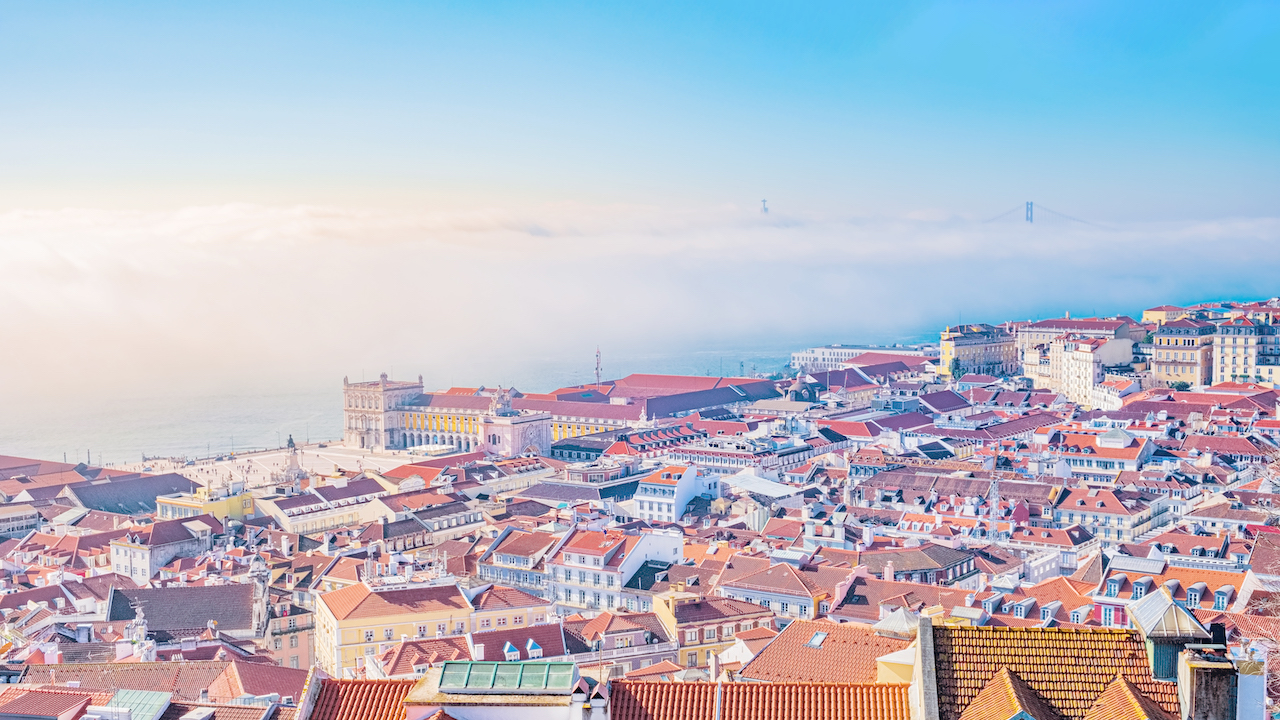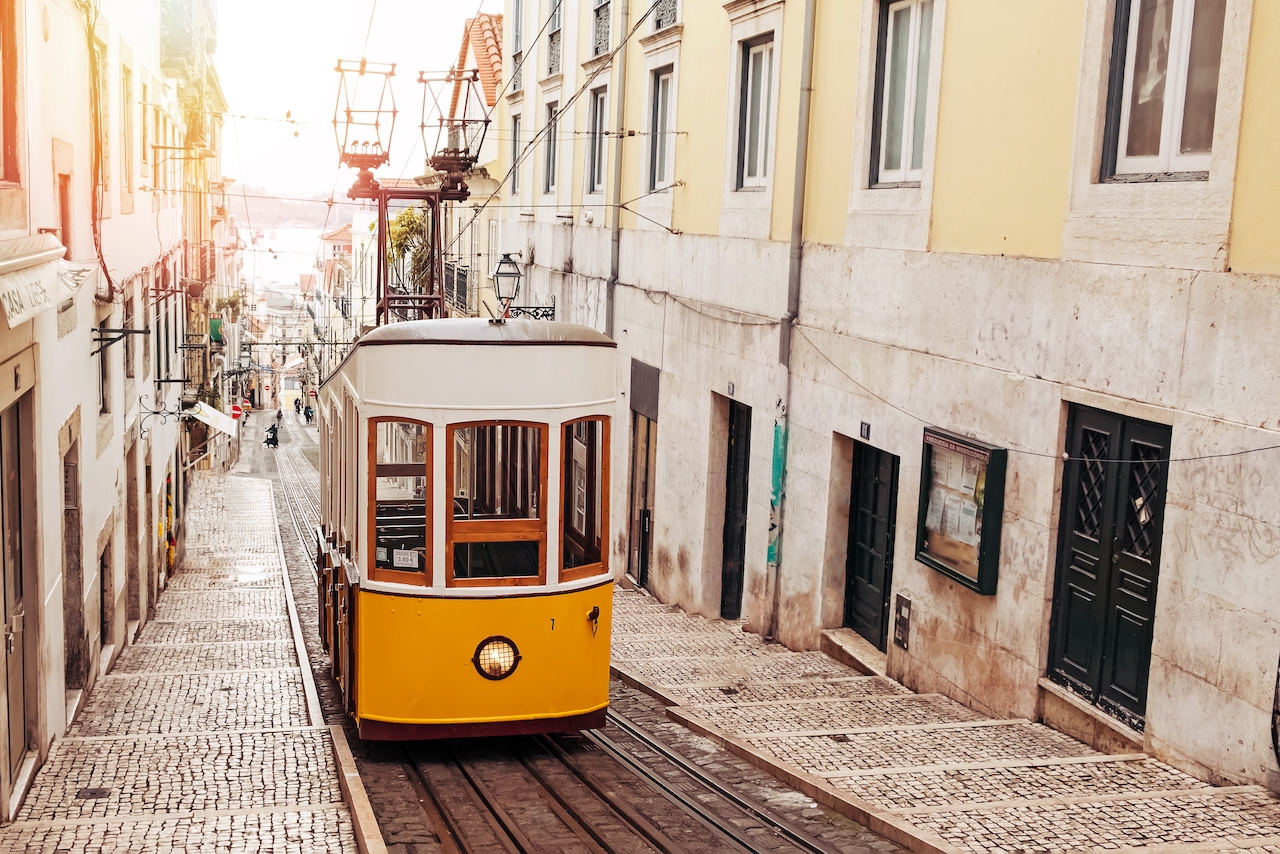Contents
Thinking about renting an apartment, or a house, in Lisbon and moving there for a while, to study or work? If you are in that status, you’re probably weighing the pros and cons, and especially asking yourself: is the quality of life good in Lisbon?
Read here what documents are needed to move to Portugal.

Quality of life in Lisbon
Plenty of days of sunshine per year, a mild climate, a healthy environment, and a lot of verdant outdoor areas. Alongside its proverbial multicultural allure, vibrant vibes, and azulejo tile-decorated houses, Lisbon has many features. Features that make it one of the cities with the best quality of life both in Europe and in the world.
Want to make sure? Let’s look at the data. The latest figures published by Numbeo, last June 2022, award Lisbon with 149.60 points, i.e. a “high quality of life index”. This data matches the Money.co.uk “Healthiest Places to Live Index”, which evaluates factors such as healthcare, life expectancy, and safety and features Lisbon as the 3d healthiest city to live in, in 2022. Whether you’re planning to book a bed and breakfast in Lisbon for your vacation, or looking for a serviced apartment in Lisbon to attend a study abroad program, you’re bound to enjoy a pleasant wholesome living experience!
Safety in Portugal
What about safety in Portugal’s capital city? That’s a significant and essential question that anyone who relocates, albeit for a short period of time, needs a straightforward and dependable answer to. You need to be reasonably certain that you’ll be quite safe before you decide to rent an apartment in Lisbon! Again, figures are what we need to look at. Ready for the good news? All the current data available provides the same information: Lisbon is a safe city, with low crime rates – the Numbeo indexes are: crime rate 27.62, safety index 72.38 – and an overall welcoming and inclusive atmosphere. Plus, Portugal ranks 6th in the Global Peace Index, and 4th in the recently published Forbes Advisor “safest countries for travelers” ranking.
Pickpockets in Lisbon
Albeit safe and carefully monitored by hundreds of policemen, Lisbon, like all other major cities and tourist destinations, has its share of crime. Pickpocketing is, alas (and, again, as in any other bonafide tourist destination) quite common in main tourist areas, near the major landmarks, in the party districts, on buses and metros, and generally, everywhere there are a lot of people together. Nothing to be scared about, just don’t keep your wallet and phone in your back pocket, keep your handbag or backpack where you can see it (in front of you, especially on buses or on the metro), and, at all times, be present.
Cost of living in Lisbon
Ok, so we’ve ascertained that Lisbon offers a good quality of life, and is a safe city. If you have an ample budget and are looking for a holiday home in Lisbon for a luxury vacation this could well be enough. But most of us mere mortals also need to know if we can afford to, say, rent an apartment in Lisbon and live there for a year or two. Evaluating a city’s cost of living is crucial to having a stress-free and fruitful experience.
How much does living in a house in Lisbon really cost?
To help you out, we’ve looked at the Numbeo indexes and estimates – which you can find and study yourself here – and come up with the following average appraisals on the cost of living in Lisbon:
- Without rent, a single person in Lisbon spends around 600€ per month.
- A family of 4 spends about 2,111€ per month to live in Lisbon, without rent.
- The monthly pass for public transport costs 40€.
- An average meal in a “normal” (inexpensive) restaurant costs 10€.
- The average monthly fee for a fitness club membership is more or less 33€.

How much does living in Lisbon cost compared to other popular cities?
A very interesting factor to consider is how expensive (or cost-effective) Lisbon is, compared to other cities in Europe and in the world. Foreign students may be positively impressed by the fact that, according to Numbeo data, Lisbon is more affordable than other European capital cities. Compared to Milan, for example, it’s 35.14% cheaper than Milan in general terms.
Students and digital nomads from the US could also be excited by the comparison between Lisbon and another popular and renowned student destination, like Boston MA. Consumer prices, including rental fees, are 52.70% lower in Lisbon than in Boston, restaurant bills are 47.35% cheaper and groceries cost up to 56.46% less!
| Accommodation type | Average monthly rental fee |
| 1-bedroom apartment in downtown Lisbon | 997.91 US$ |
| 1-bedroom apartment in the outskirts | 710.55 US$ |
| 3-bedroom apartment in downtown Lisbon | 2,014.12US$ |
| 1-bedroom apartment in the outskirts | 1,167.62US$ |
Utilities
Utilities are another influential factor one needs to consider: unless you’ve booked a bed and breakfast in Lisbon for your vacations, you’re going to have to pay electricity bills, heating water, etc. Knowing what to expect in terms of utility expenses when you decide to rent an apartment in Lisbon is vital. The latest Numbeo data reveals that the average monthly cost for basic household utilities (i.e. electricity, heating, A/C, water, garbage) for an average-sized apartment (85 square meters) in Lisbon is 120.14US$.
Check out the simulator for an estimate of future bills
But by comparing the costs of the major Portuguese electricity and power companies you can get more detailed insight. The ERSE online simulator is a wonderful tool you can use to see prospective future costs for electricity and natural gas and compare the different commercial proposals made by the local providers. Check it out, and “play around” with it a while for a pretty-close estimate of the utility expenses you’re likely to be charged in Lisbon.
Daily expenses in Lisbon
How much do groceries and other “daily favorites” cost in Lisbon? We’ve listed a few basics to give you a general idea:
- Chicken, circa 6,50€ per kg.
- Salmon, fresh, approx 11,00€ per kg.
- Pasta approx 2,00€ per pack;
- 1 beer, from 80 cents to 5€ depending on the brand;
- Dining out, seated and served, from 15,00€ per person.
Transportation in Lisbon
The capital of Portugal offers its inhabitants and those who visit and perhaps stay in one of the many charming holiday homes in Lisbon, an efficient and diverse transport system. Lisbon’s public transformation includes buses, trams, the metro line, trains, cable cars, ferries, and elevators (the most important one is the Santa Justa lift). Naturally, there are taxis and private companies offering chauffeur services as well.

The metro line
The Lisbon metro runs every day from 6.30 am to 1 am, and a few times a year (for special events and festivities) all night long. It comprises 4 lines, each identified by a different color and, just as in other countries, a name that includes the start and end-of-line stops.
The Lisbon metro lines are:
- the green line (Telheiras – Cais do Sodré)
- the blue line (Reboleira – Santa Apolónia)
- the yellow line (Odivelas – Rato)
- the red line (Aeroporto – São Sebastião)
Here you can find the metro map of Lisbon.
Taking the bus in Lisbon
The Lisbon bus line comprises 172 routes. The main lines run from 5 am to 11 pm, and there is a night bus schedule for some city center areas.
The trams, elevator, and cable cars
Today, Lisbon’s transport system comprises a total of 6 trams, 3 cable car lines, and one lift, the famous Santa Justa elevator. Truth be told, locals hardly take the Santa Justa lift anymore, it’s more of a tourist attraction nowadays, but Lisbon’s inhabitants do use the trams and funiculars a lot.
Public transport trams are yellow and can be very pleasant and convenient to use in specific areas of the center. The n.28 tram is possibly the best known and most fascinating: it is a vintage vehicle that runs in historic areas and provides amazing views. Lisbon’s cable cars are very useful as they connect the city’s hilliest areas to the ones below. The cable car lines are:
- Ascensor da Bica: from Rua de São Paulo and Largo do Calhariz, up to the Bairro Alto neighborhood.
- Ascensor da Glória: from Praça dos Restauradores, up Calçada da Glória, and to Bairro Alto.
- Ascensor do Lavra: the most ancient of all. It climbs Calçada do Lavra in two minutes.
- Elevador de Santa Justa: Lisbon’s public vertical elevator was built in 1902 and today mostly accommodates tourists looking for a spectacular view. Nobody is ever disappointed: the vistas from the top are breathtaking.
Taxis in Lisbon
Taxis are a good way to get around Lisbon if you’re in a rush, still getting to know the city, or want to be comfortable and extra safe at night. In the daytime, the minimum fare charged is 3,25€ and the per km fee is 0.47€ which means many rides cost between 4 and 6€. Nighttime fees are subject to a 20% surcharge.
